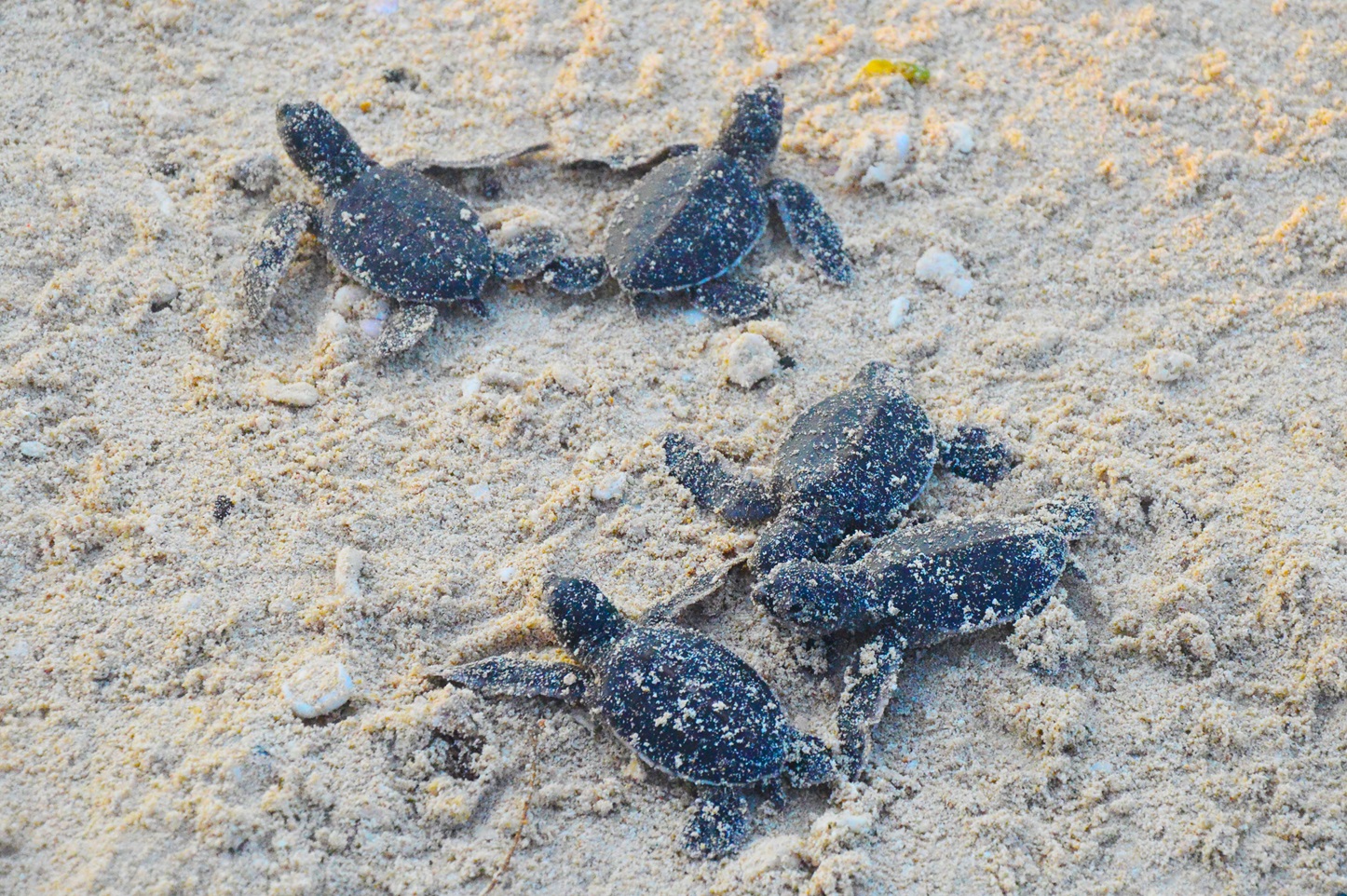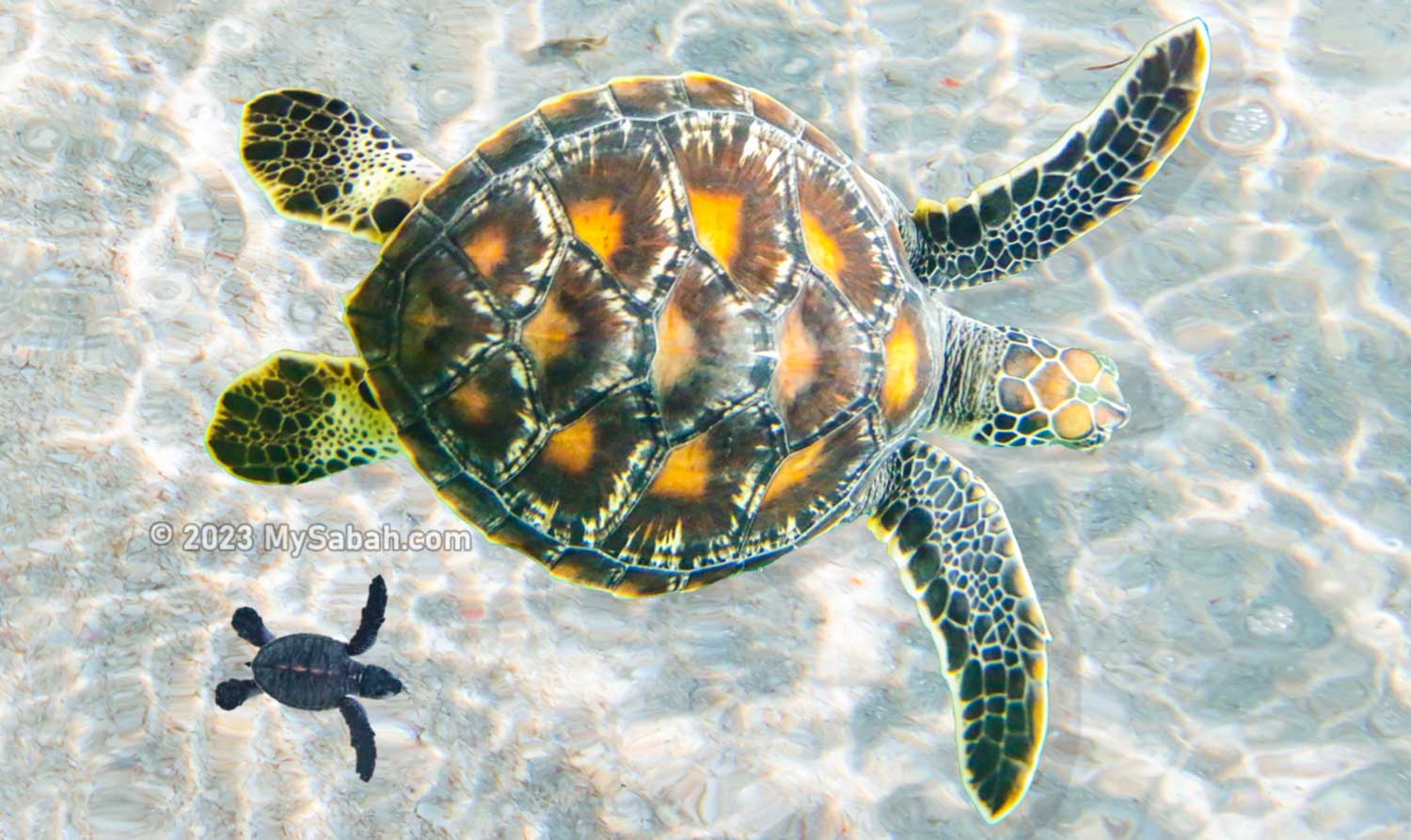
Wings Over the Waves: Unveiling the Avian Riches of Pulau Penyu, Turtle Island
Far from the beaten path, where emerald waters cradle ancient landforms and the rhythm of the ocean dictates life, lies Pulau Penyu – Turtle Island. While its name instantly conjures images of majestic sea turtles, silently navigating its surrounding reefs and nesting on its pristine beaches, it is an equally vital, if less heralded, sanctuary for an astounding diversity of avian life. For the discerning birdwatcher, Pulau Penyu is not merely a destination; it is a vibrant, living tapestry of feathers and song, a crucible of evolution, and a critical waypoint on some of the world’s most epic migratory journeys.
Strategically positioned along a major East Asian-Australasian Flyway, Pulau Penyu serves as an indispensable refueling station and breeding ground for countless species. This geographical advantage, combined with its remarkably intact and varied ecosystems – from dense, primary rainforests to intricate mangrove estuaries, and from rugged coastal cliffs to expansive intertidal mudflats – creates an unparalleled ecological mosaic that supports an extraordinary spectrum of birdlife. It’s a place where the air hums with the unseen movements of life, and every rustle in the canopy or flash of colour against the verdant backdrop promises a new discovery.
The journey to Pulau Penyu itself sets the tone. Often involving a boat ride across cerulean seas, the island emerges from the horizon like a verdant jewel, its peaks shrouded in mists, hinting at the wild beauty within. Upon arrival, the cacophony of the rainforest immediately envelops the visitor. Here, within the towering dipterocarp trees, reside some of the island’s most spectacular residents. The resonating call of the Rhinoceros Hornbill, a sound akin to a prehistoric laugh, echoes through the canopy, often followed by the sight of its massive, casque-adorned silhouette gliding between trees. These magnificent birds, along with their smaller brethren like the Bushy-crested and Oriental Pied Hornbills, are vital seed dispersers, integral to the health of the forest.
Deeper within the forest, the quest for the more elusive gems begins. Pulau Penyu is renowned among serious birdwatchers for its vibrant Pittas. The Hooded Pitta, a kaleidoscope of green, black, and electric blue, is a prized sighting, often found foraging on the forest floor, its presence betrayed only by a fleeting movement or a soft, plaintive whistle. The Banded Pitta, with its striking yellow and black plumage, offers another challenge, its shyness making any encounter a triumph. These ground-dwelling jewels are emblematic of the island’s pristine forest health, requiring specific undergrowth conditions to thrive.
As the forest transitions towards the coast, the environment shifts, and so too does the avian population. The intricate labyrinth of Pulau Penyu’s mangrove forests is a world unto itself, a vital nursery for marine life and a haven for specialized bird species. Here, the keen eye will spot various species of Kingfishers – the brilliant blue-backed Stork-billed Kingfisher perching patiently over a tidal creek, or the more diminutive but equally striking Blue-eared Kingfisher darting like an iridescent arrow. Herons and Egrets, from the stately Great Egret to the more diminutive Little Heron, stalk the shallows, their patience a masterclass in avian predation. Overhead, the majestic Brahminy Kite, with its distinctive white head and chestnut body, patrols the coastline, a constant sentinel of the estuarine ecosystem.

The island’s pristine beaches and rocky outcrops are equally rewarding. During migratory seasons, these shores become bustling hubs for a multitude of shorebirds. Ruddy Turnstones, Pacific Golden Plovers, and various species of Sandpipers comb the tideline, their frantic movements a testament to the urgency of their journey. Offshore, the graceful flight of various Tern species – the Lesser Crested Tern, Common Tern, and the Whiskered Tern – can be observed as they dive with precision for fish. For many of these species, Pulau Penyu represents a critical stopover point, a place to rest and refuel before continuing their arduous journeys across continents. Witnessing this grand migration is a humbling experience, connecting the observer to the immense natural cycles of the planet.
"Pulau Penyu is a microcosm of global biodiversity," explains Dr. Anya Sharma, a leading ornithologist who has dedicated years to studying the island’s avifauna. "Its varied habitats, from the highest canopy to the deepest reef, are inextricably linked. The health of the sea turtles affects the nutrient cycle, which in turn influences the insect populations, and ultimately, the birds. It’s a perfect illustration of ecological interdependence. What we see here is not just a collection of species, but a complex, living system where every element plays a crucial role."
Indeed, the island’s unique geological history and isolation have also fostered the development of endemic or near-endemic species, adding another layer of allure for dedicated birders. While specific endemics are still being documented, the possibility of encountering a subspecies unique to Pulau Penyu adds an element of thrilling discovery to every outing. Imagine the excitement of spotting a Pulau Penyu Bush Warbler, its song subtly different from its mainland cousins, or a uniquely patterned Pulau Penyu Flowerpecker, a tiny, vibrant ambassador of the island’s distinct evolutionary path. These potential endemics underscore the island’s importance as a biodiversity hotspot, a living laboratory where evolution continues to unfold.
Birdwatching on Pulau Penyu is an immersive experience. It demands patience, respect for nature, and an open mind. The early mornings are often the most productive, when the forest is alive with the dawn chorus, a symphony of chirps, whistles, and calls that slowly builds with the rising sun. Guided treks through the forest are essential, led by local experts who possess an intimate knowledge of the terrain and the habits of its avian residents. Their ability to identify a bird by its call alone, or to spot a camouflaged species hidden deep within the foliage, transforms a casual walk into a profound educational journey.
However, the beauty and ecological significance of Pulau Penyu also come with the responsibility of conservation. Like many remote islands, it faces growing threats from habitat loss, climate change, and plastic pollution. The very migratory birds that grace its skies are vulnerable to changes across their vast routes, and the island’s unique species are susceptible to even minor disturbances. Conservation initiatives, often involving local communities and international research organizations, are vital to protect this delicate balance. These efforts range from anti-poaching patrols to sustainable tourism practices, ensuring that the island’s natural heritage is preserved for future generations.
The connection between the island’s namesake turtles and its birds is more profound than initially meets the eye. Both rely on healthy coastal ecosystems, pristine waters, and undisturbed nesting/breeding grounds. Conservation efforts for one often benefit the other. A clean beach for nesting turtles is also a safe foraging ground for shorebirds. A healthy reef system supports the fish populations that sustain pelagic birds. Pulau Penyu stands as a powerful symbol of this interconnectedness, a reminder that the fate of its iconic turtles and its magnificent birds are inextricably linked.
For those seeking an unparalleled birdwatching adventure, a visit to Pulau Penyu is more than just a tick on a list; it is a profound engagement with nature in its most raw and magnificent form. It is a place where every rustle of leaves, every distant call, and every flash of colour tells a story – a story of migration, survival, and the enduring wonder of the natural world. As the sun sets over its western shores, painting the sky in fiery hues, and the nightjars begin their nocturnal serenades, Pulau Penyu leaves an indelible mark on the soul, a vivid reminder of the planet’s extraordinary avian treasures and the urgent need to protect them.


